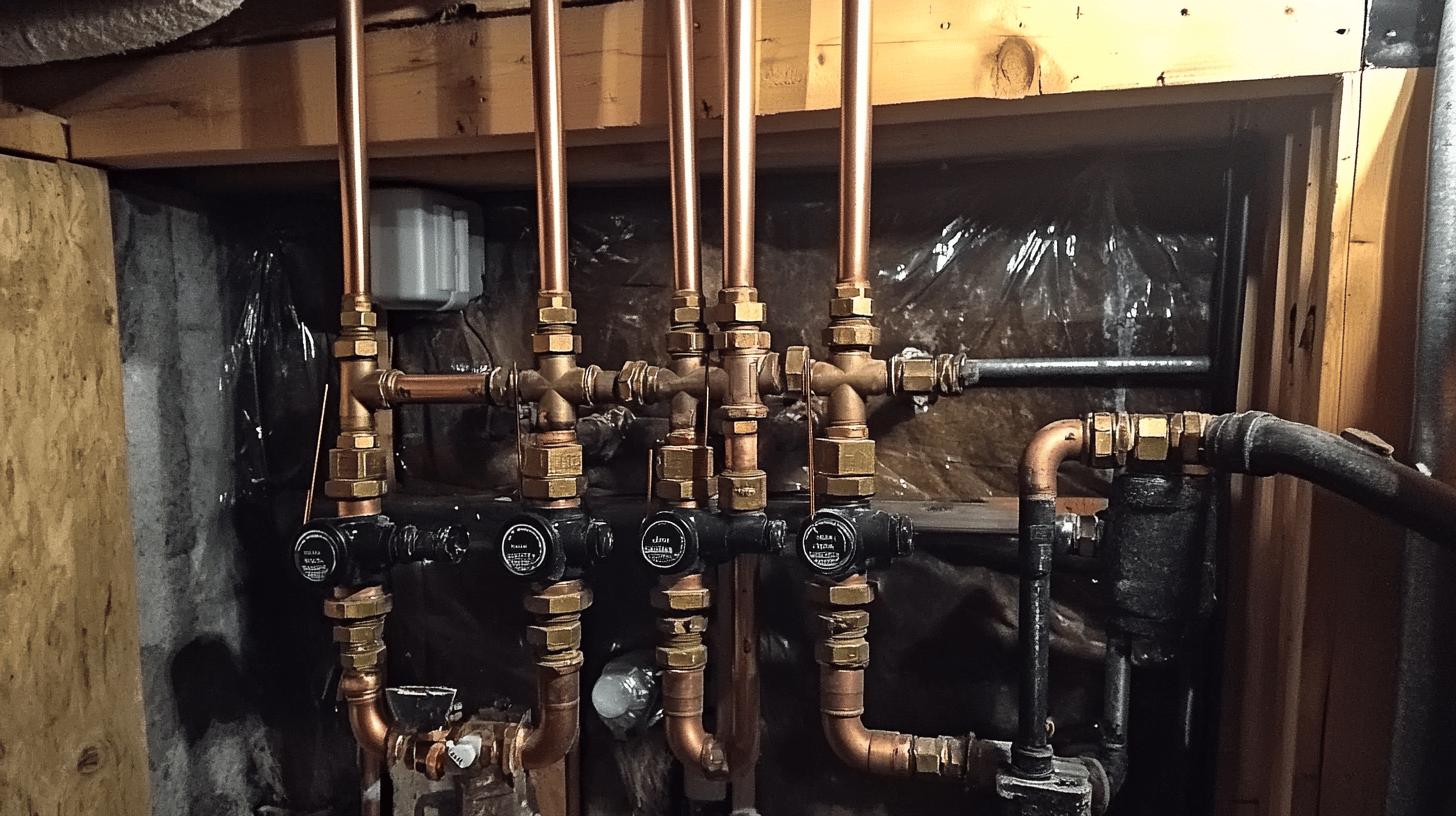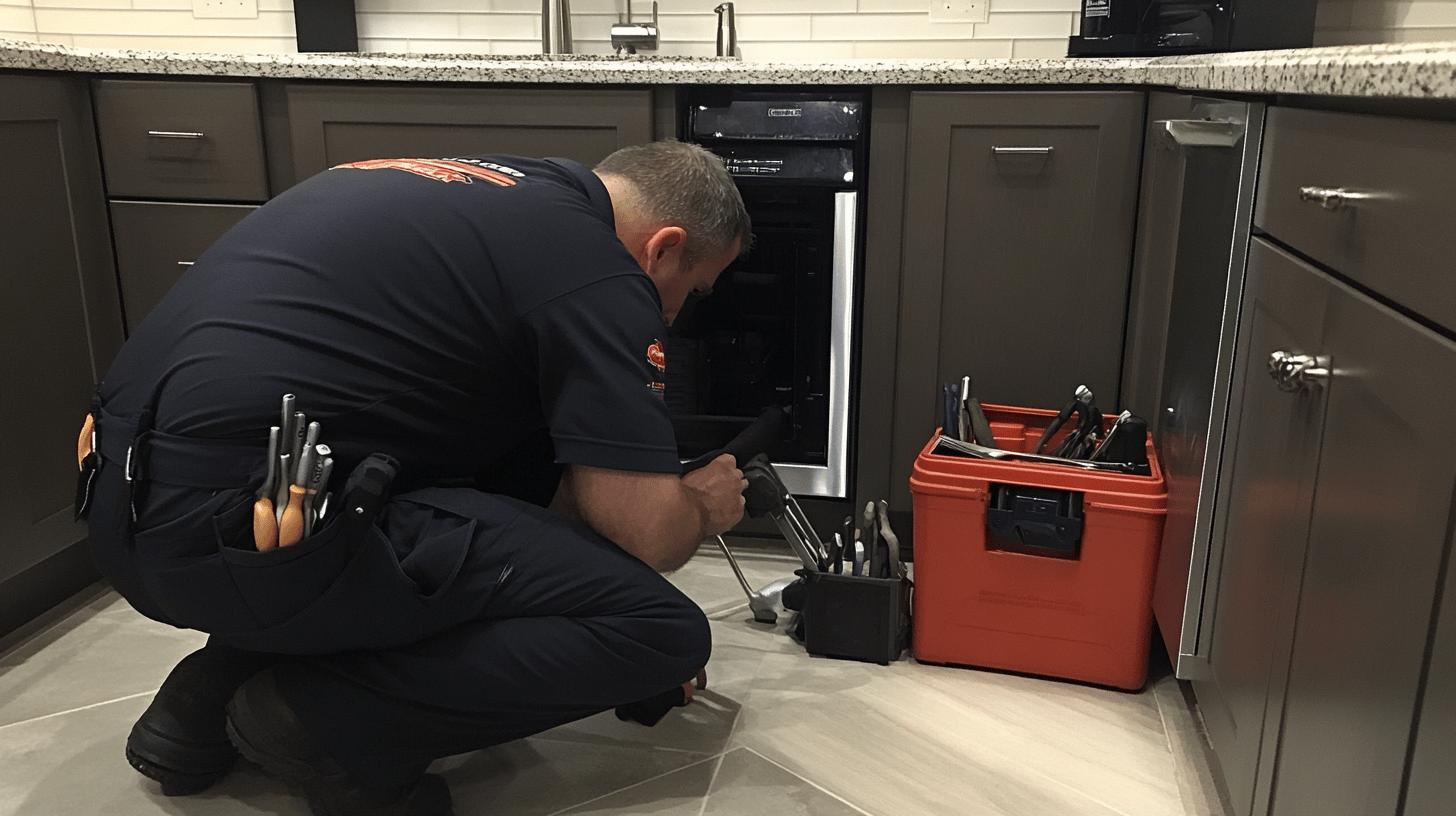TL;DR:
- Get a professional plumbing inspection to spot issues early.
- Regularly check for leaks; maintain drains, faucets, and toilets.
- Use natural alternatives like vinegar and baking soda for clogs.
- Know your home’s plumbing layout, especially the main water shut-off valve.
- Essential tools: plunger, pipe wrench, plumbing snake, duct tape.
- Water pressure should be 40-60 psi; check regularly.
- Call a plumber for persistent leaks, low water pressure, or water damage.
- Regular maintenance helps prevent major plumbing issues.
Did you know about 30% of problems new homeowners face are plumbing-related? Without the right knowledge, these issues can be overwhelming. Start off strong by getting a professional inspection to catch any hidden problems. Learn how to spot early signs of leaks and why cleaning your drains regularly can save you time and money. Knowing where your main water shut-off valve is and keeping faucets in good shape will make handling your home’s plumbing way easier.
Essential Plumbing Tips for New Homeowners
When you first own a home, getting a professional plumbing inspection is super important. It helps find hidden issues before they turn into bigger problems. Experts can catch leaks, cracks, or old parts early, saving you time and money on repairs. They have the right tools and know-how to check your plumbing, giving you peace of mind about your home.
- Regularly check for leaks in faucets and toilets.
- Clean drains monthly to prevent clogs.
- Replace faucet washers and toilet flappers as needed.
- Avoid chemical drain cleaners; opt for natural alternatives.
- Insulate pipes to protect against freezing during winter.
Knowing your home’s plumbing layout is key. First, locate the main water shut-off valve, usually outside in a green utility box. It’s important to know where it is for emergencies. Also, keep an eye out for water leaks—drips or stains on walls are signs. Fixing them quickly can prevent bigger damage. Understanding your system helps you manage and maintain your plumbing better.
Identifying and Solving Common Plumbing Issues

To catch plumbing issues early, make regular checks a habit. Look for leaks around faucets, toilets, and under sinks, as even small leaks can lead to bigger problems like high water bills or damage. Listen for sounds of running water or drips, and watch for stains or damp spots—they’re signs of hidden leaks.
Clogged drains are another common issue. Use strainers to catch hair and food particles, and avoid flushing anything other than toilet paper and human waste. Flushing wipes can cause major blockages. Skip the harsh chemical drain cleaners, as they can damage pipes—try using vinegar and baking soda instead for a gentler, effective clean.
- Use vinegar and baking soda for minor clogs.
- Install drain strainers in sinks and tubs.
- Regularly check and replace faucet washers and seals.
- Use a plunger for minor clogs instead of chemicals.
You should call a plumber when you have persistent leaks or recurring clogs that won’t go away. Delaying can make things worse, leading to more damage and higher costs. A professional plumber has the skills to fix complex issues quickly, keeping your plumbing system working properly.
Building Your Plumbing Toolkit
Having the right tools can make handling minor plumbing issues easier. A good toolkit should have a plunger, pipe wrench, and plumbing snake for emergencies. Items like duct tape, screwdrivers, and rags are also helpful. For cleaning, vinegar and baking soda work better than harsh chemicals and are safer for your pipes.
| Tool | Use |
|———————|————————————————|
| Plunger | Clears clogs in toilets and drains |
| Pipe Wrench | Tightens or loosens pipes |
| Plumbing Snake | Removes stubborn clogs from pipes |
| Duct Tape | Provides temporary leak fixes |
A toolkit is great for simple problems, but it’s important to know when to call in a pro. Some issues are too complicated and trying to fix them yourself could make things worse and cost more. Calling a plumber saves you time, money, and prevents further damage.
Understanding Your Home’s Plumbing System

Your home’s plumbing system is a complex network that brings water in and removes waste. Understanding how it works helps you handle small problems and keep everything running smoothly. Make sure you know where the main water shut-off valve is—this is super important in emergencies. Also, learn the layout of your pipes and where key appliances are to avoid damage when making repairs.
Key Plumbing System Components
Pipes, valves, and fixtures are the key parts of your plumbing system. Pipes carry water and come in materials like copper, PVC, and PEX, each for different purposes. Valves control the water flow, which is important when you need to shut things off during repairs. Fixtures like sinks and toilets are where you actually use the water. Together, these make up the backbone of your plumbing system.
Managing Water Pressure
Water pressure should stay between 40-60 psi to avoid stressing your system. You can measure it with a gauge on an outdoor spigot. If it’s too high, installing a pressure-reducing valve can protect your pipes from damage.
It’s a good idea to schedule regular maintenance with a pro. They can spot hidden issues and suggest upgrades, keeping your plumbing in good shape and preventing problems down the line.
When to Call a Professional Plumber
DIY plumbing can lead to more harm than good. Handling issues by yourself might seem cheap, but could worsen problems. Serious issues like slab leaks need licensed professionals. They diagnose and fix issues efficiently.
- Persistent or recurring leaks
- Low water pressure throughout the house
- Installation of new appliances or fixtures
- Signs of water damage or mold growth
- Sewer line blockages or backups
Calling a professional ensures proper fixes and gives peace of mind. Plumbers have the experience and tools needed. Keep a trusted plumber’s contact handy for emergencies, saving stress and preventing damage.
Final Words
Taking proactive steps with your home’s plumbing helps you avoid major problems down the road. Starting with a professional inspection sets a solid foundation by catching potential issues early. Regular maintenance, like cleaning drains and knowing where the main water shut-off valve is, is a great way to prevent future headaches.
Having basic plumbing tips and tools for minor fixes is helpful, but knowing when to call a professional ensures bigger problems are handled safely and correctly.
With these steps, you’ll keep your plumbing running smoothly and enjoy peace of mind.
FAQ
What are the best plumbing tips for new homeowners?
Professional plumbing inspections are advised for new homeowners
to detect any hidden issues early on.
Locate the main water shut-off valve to handle emergencies effectively.
Regularly clean your drains and weatherproof pipes to prevent freezing.
What is the first rule of plumbing?
The first rule of plumbing
is to always know the location of the main water shut-off valve.
It allows you to control water flow
and stop leaks quickly in an emergency.
What are some common mistakes in plumbing?
Common plumbing mistakes include
ignoring leaks, using too much force on fixtures, and combining incompatible piping materials.
Avoid these by staying informed and conducting regular system checks.
At what stage is the piping run for plumbing in a new house?
In a new house, the rough-in stage involves running the piping
after the framework is set but before walls are closed.
This stage requires careful planning for effective system integration.
What is the most common household plumbing problem?
The most common household plumbing issue
is a leaky faucet, which can lead to water waste and increased utility bills.
Regular inspections help detect these problems early.

